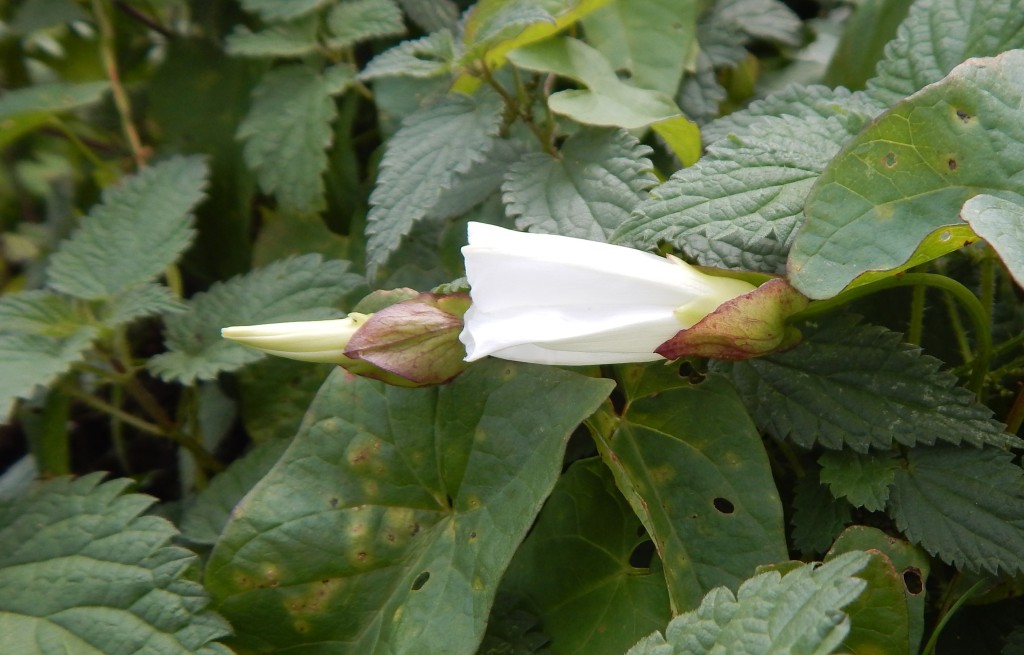
[065] Calystegia silvatica, Large Bindweed
Introduction
When I grew up, over fifty years ago, I knew this plant as Convulvulus, a widespread wildflower of the British countryside sometimes invading gardens as a weed. Almost all of this was wrong. It isn’t Convolvulus; it isn’t a wildflower and it isn’t British.
Calystegia silvatica, known as Large Bindweed, is an introduced garden plant that has escaped and has become an invasive weed.
Taxonomy
Kingdom – Plants
Division – Vascular Plants
Class – Angiosperms (Flowering Plants)
Order – Solanales
Family – Convulvulaceae (Morning Glories)
Genus – Calystegia (Bindweeds)
Scientific Name – Calystegia silvatica
Name
There is a species called Convolvulus, in the same family as Calystegia. Convolvulus plants are called bindweeds or morning glories, as are Calystegia and everything in the family. Most of them have flowers that open up in the early morning. If you don’t know why they are called bindweed, read on.
Calystegia comes from Greek roots ‘kalux’ and ‘stege,’ meaning ‘cup’ and ‘covering.’ Silvatica means ‘of the wood.’
Morning Glories
There are over a thousand species of Convulvulaceae in about ten genera, including the sweet potato. Many are cultivated as garden plants.
Calystegia has about 25 species. It is very closely related to Convolvulus and some experts combine the two genera.
Description
Calystegia silvatica is the largest species of Calystegia. Its large white flowers are attractive but the nature of the plant makes it an unusual plant in gardens.
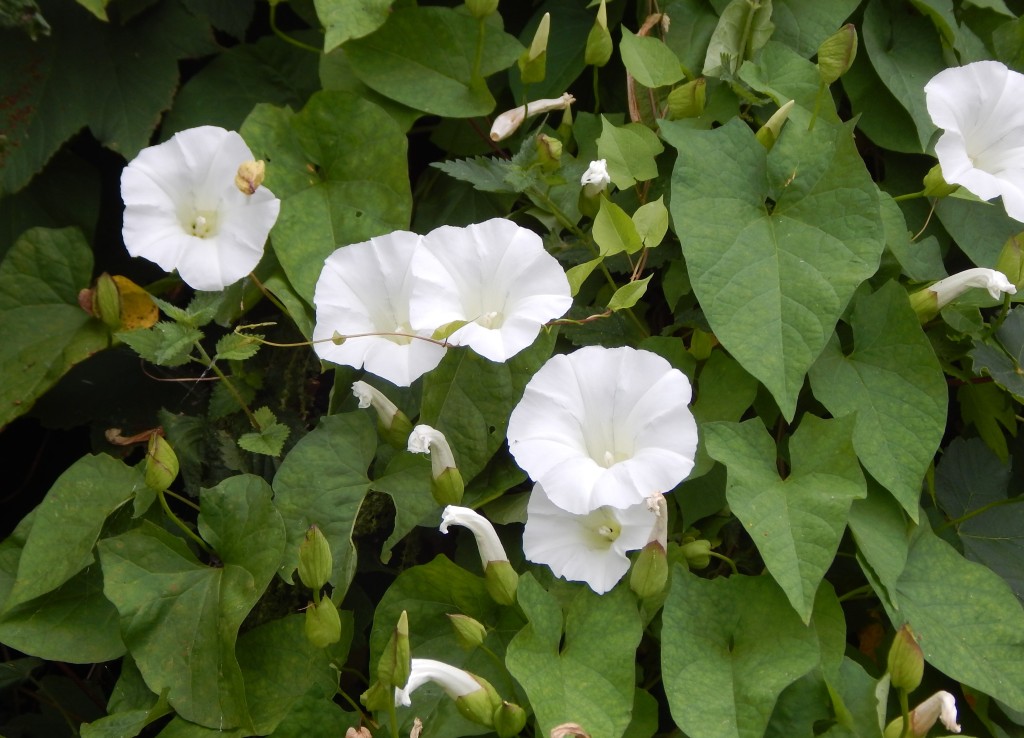
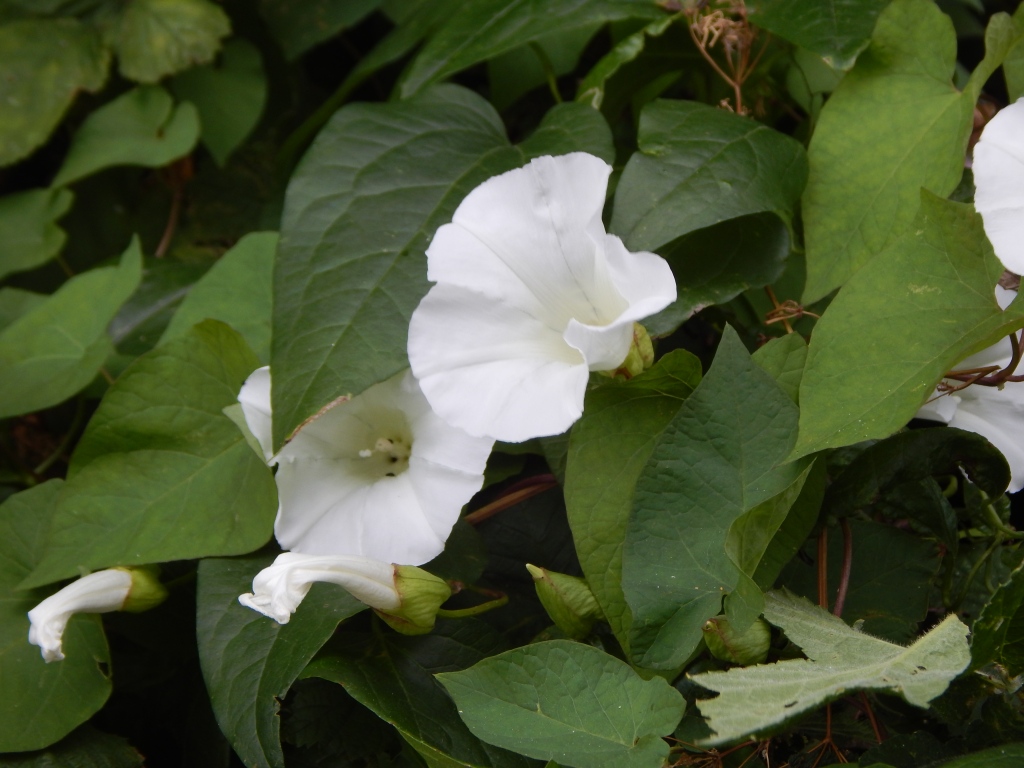
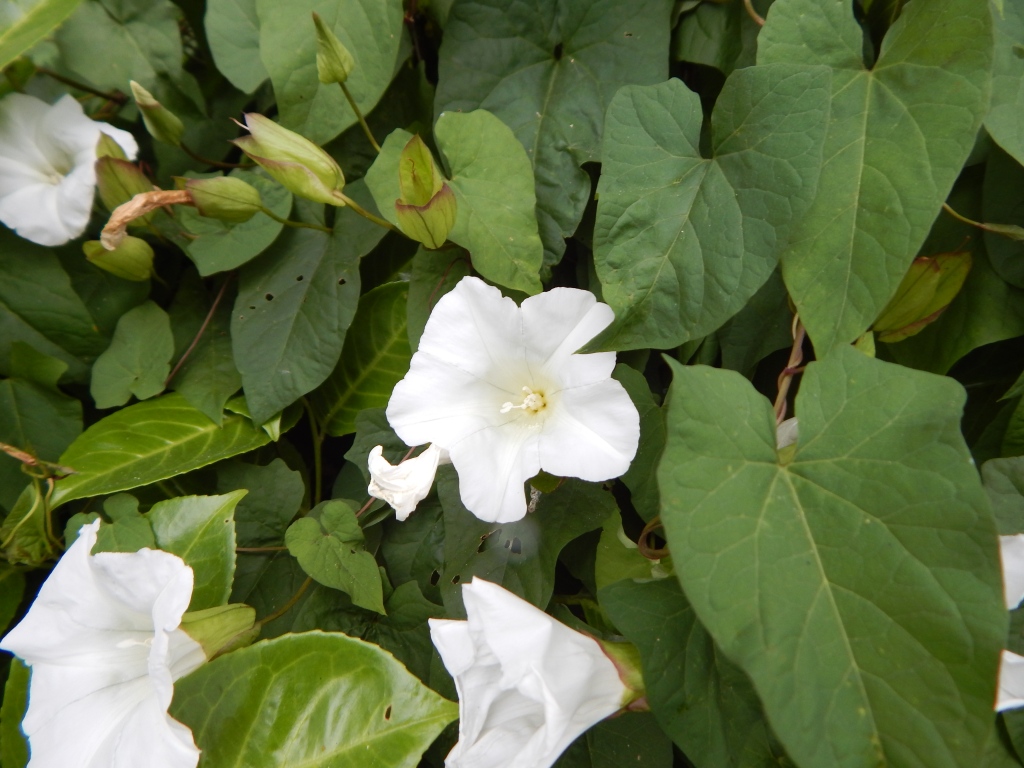
You see the distinctive trumpet shaped flowers in the next two pictures.
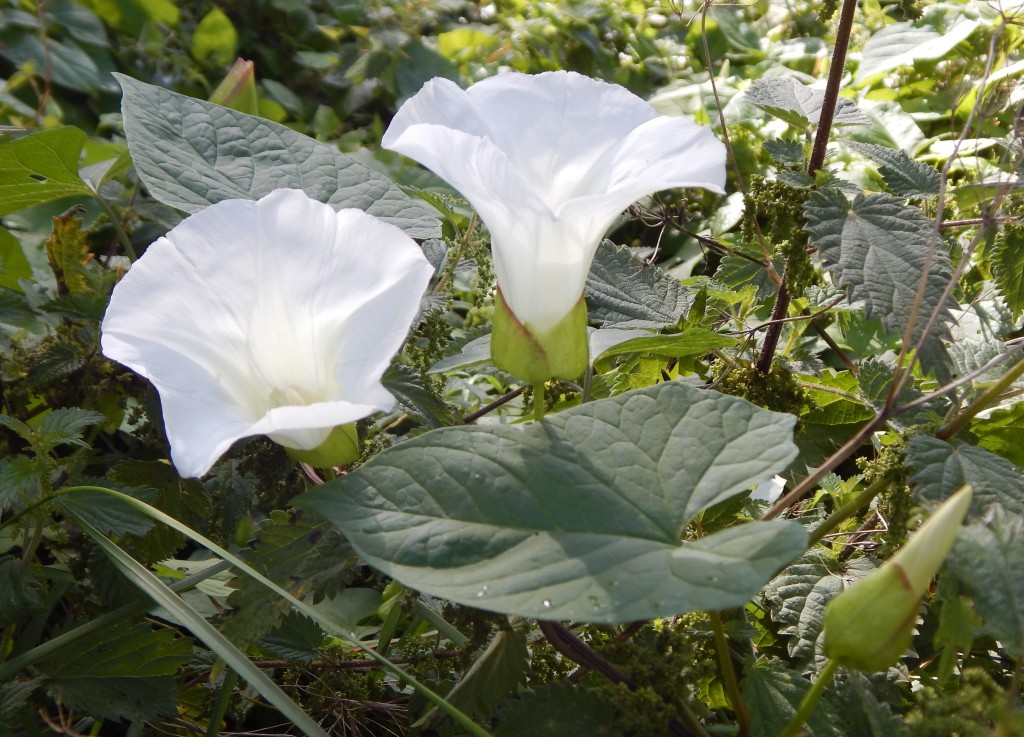

The clue is in its name, bindweed. Wikipedia in passing calls it a ‘strong and rampart climber.’ This an understatement. It’s a climbing plant and climbs up – inside, through and round any other garden plant, eventually wrapping itself round it, and binds it. It not an easy weed to remove from gardens.
Habitat and use
Calistega silvatica is native to Southern Europe but has apparently been introduced in many countries as a garden plant. Not surprisingly it has escaped and become invasive.
Other Notes
I find it really hard to understand why Wikipedia says only that in some places it is considered a weed.
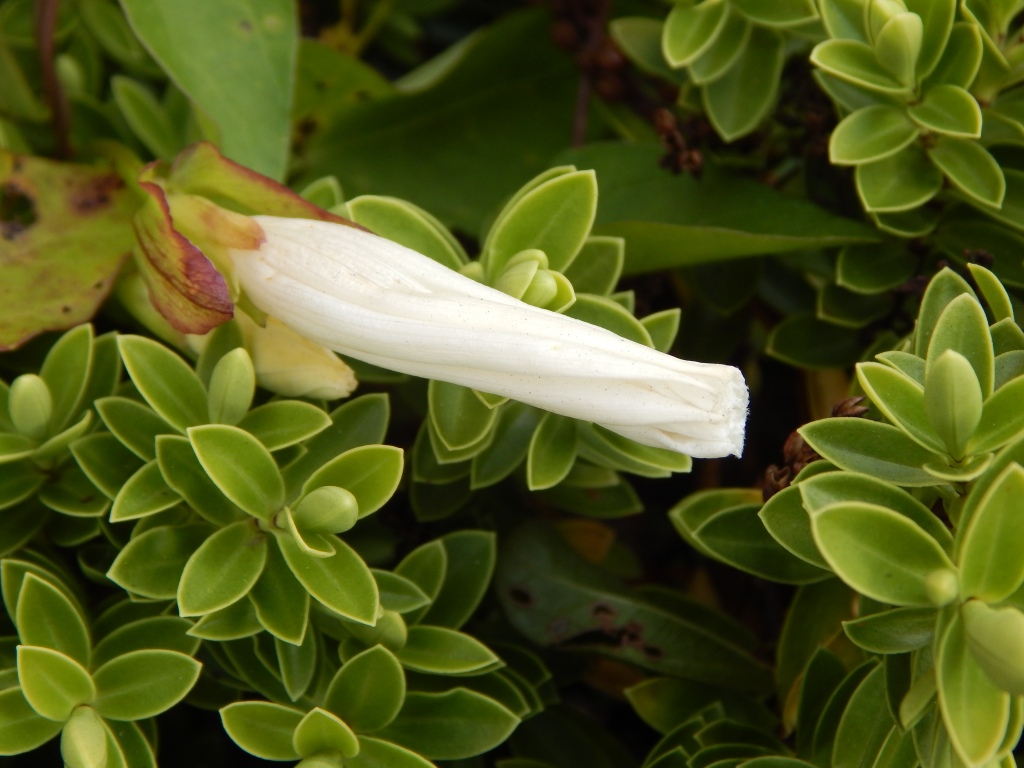
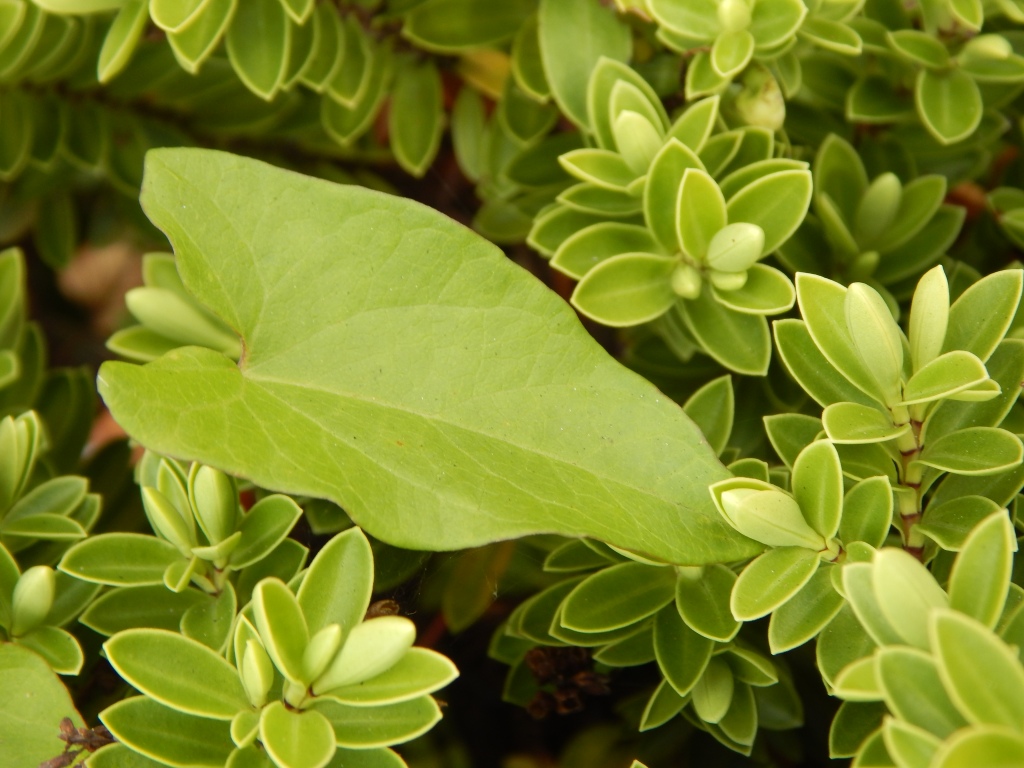
Above you can see a long tubular flower before it opens and the very recognisable leaf shape. Both are emerging from a garden plant, which will soon be covered like this.

I would say that I see this plant almost everywhere and always as an unwanted weed. That is, of course an over generalization, but it must be among the most unwanted of garden weeds.
See also
We will see [091] Field Bindweed, which is much less invasive.
